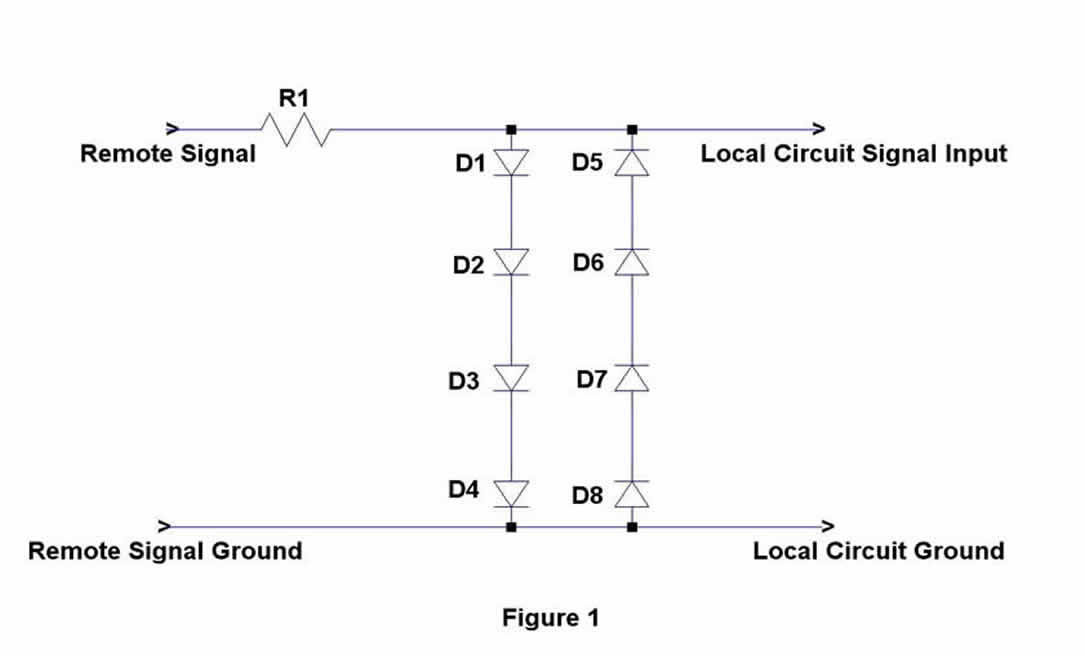|
Electrical Surge Protection
By Neil Radio8Z
There are devices such as metal oxide varistors (MOVs), spark gaps,
and gas discharge tubes which can be used to provide protection
from voltage surges on signal lines. These work by clamping the
voltage on the signal lines to approximately 80 volts and above
referenced to a protective ground but such voltages can still damage
electronic equipment. The risk of electronic damage can be reduced
if the voltages on the signal lines is limited to smaller values
such as 3 volts above circuit ground. Such limiting needs to be
high enough in voltage so as not to interfere with the signal but
low enough to protect the electronics.
One very simple technique is to use diodes and resistors to limit
the currents and voltages on a signal line. For a typical single
ended line level connection the circuit in Figure 1 can be used.
The diodes, typically 1N4004, limit the voltage and the series resistor,
100 ohms or thereabouts, limits the current. If the signal voltage
is higher than 3 volts peak then more diodes can be added in series
with each adding 0.7 volts before clamping. The intent of this circuit
is to limit the voltage difference at the input to the electronic
device and it is not intended for personnel or property protection
so if used with wires from outside the building it should only be
used in conjunction with properly installed building entry protection.
|


